Learning
Learning & Teaching/Wellbeing/Faith & Farm

Learning
Learning & Teaching/Wellbeing/Faith & Farm
Seesaw Schedule
Hi families, Over the coming weeks, you will notice that our Seesaw Learning Posts have been created in collaboration with our children. The posts will feature a reflection of a piece of work that they believe shows their current achievement and “next steps” in their learning. As always, each post will be based on our learning progressions, which have been adapted from the Victorian F-10 Curriculum. We believe that this process will strengthen your child’s voice and agency in talking about their learning and progress. This is a trial process that we will evaluate and refine its effectiveness at the end of the year. We look forward to sharing the children’s reflections and goals for their learning! St. John’s team. |
Educators have been busy designing learning for Literacy this week. Over the next few weeks, children will be exploring the genre of persuading. We unpacked children's pre-assessments, which Educators will use as baseline data to determine what children already know about this genre, to support our design of learning experiences.
The Genre theory is deeply embedded in the Australian Curriculum. It aims to equip children with the language to function in everyday life, in different contexts (Halliday & Hasan, 1989). For example, the language of socialising, and how we use this in different settings, e.g. in a school or home setting, or out in the community. In essence, the language differs depending on our audience and purpose.
When exploring a particular genre, we follow a series of stages, this is influenced by Berverley Derewianka’s Learning and teaching model. Here is an example of what this will look like in our Hubs as we unpack the genre of persuading over the next few weeks:
Firstly , we Deconstruct text by unpacking a range of texts that persuade, paying attention to the language being used to persuade, and the structure that the author is using to construct the text. We ask questions like: What is the author’s opinion? How do you know? What evidence did they use? Is this an effective way of persuading an audience? Why / why not? Here are some examples that children might explore, we call these, ‘Mentor texts’:
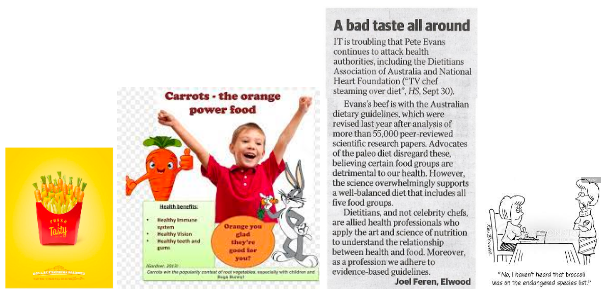

Educators and children then jointly construct /create a text.. When they work collaboratively in this way, it allows the educator to model for and support children to use the language of persuasion in a structured way, using the mentor text as a guide. We might ask questions like: what word should we use here? Why? How might we communicate our opinion? What reasons should we give?
Next, children independently construct a text. This is an opportunity for children to apply what they have learned, in this case, create a text that persuades a particular audience. Children are given agency in this, by choosing a topic, their stance / opinion and an audience. We connect this writing to our Community Project, in order to make it contextual. For example, our current Community Project of ‘Healthy me, healthy us’; children might write a letter to the editor of a Newspaper advocating for more funding for schoolwide psychologists, or prepare and present a speech to their colleagues encouraging them to practise screen free evenings. Educators support children in this process through conferencing, peer feedback opportunities as well as self-assessment using Success Criteria.
You can support your child’s learning about the genre of persuasion by inviting their opinion about a range of topics or issues (that they are familiar with and already know something about) and talking about how they might persuade someone; the language they might use to persuade, the evidence we need to build credibility.
If you have any further questions about how you can support your child’s reading, speaking and listening or writing at home, or any other Literacy-related questions, please do not hesitate to contact me.
Daniela De Luca
Literacy Coach
ddeluca@sjfootscray.catholic.edu.au
3-6s:
This term, our three/four hub mathematicians have been exploring subtraction. Through unpacking worded problems, the three/fours have been investigating a range of strategies for solving subtraction, and using a thinking routine to reflect on the effectiveness of the strategy.


The ‘what worked well’ and ‘even better if’ thinking routine engages children in dialogue around the strengths of their strategy, and asks them to reflect on the opportunities for growth by thinking about how they would approach the problem differently, had they been given another chance to complete it.
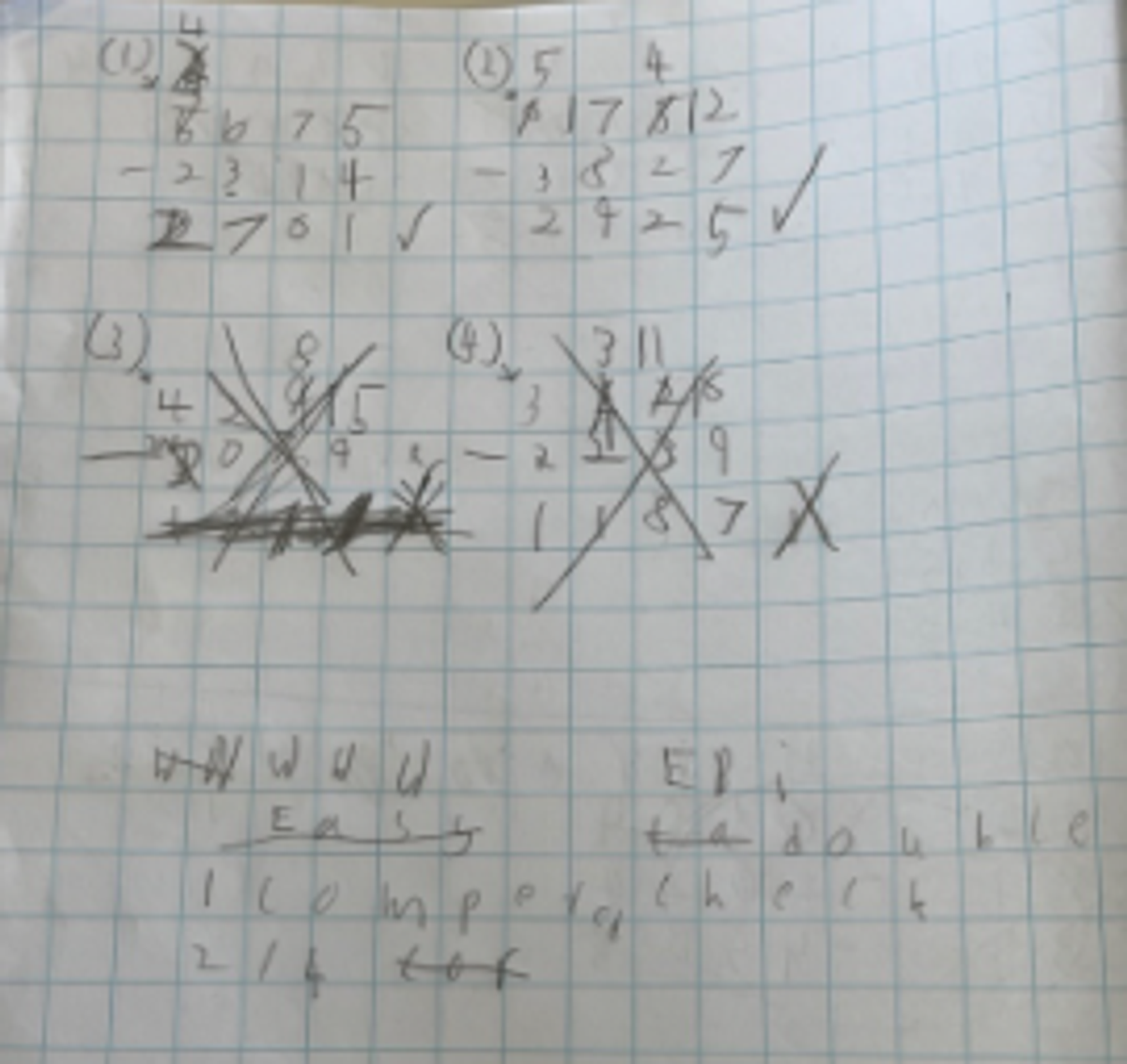

Elijah Su reflected on his success, stating he was proud of getting 2/4 subtraction problems correct, and noted that he should have double checked while using the vertical algorithm.


Alana Nguyen identified that while she achieved success with the worded problem, she found it challenging. Her edits on the left indicate Alana was successful in checking her answers with a calculator and investigating where she went wrong.
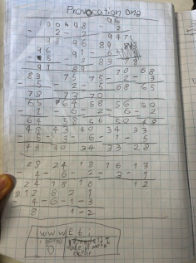

Violet Zabala acknowledged she achieved the success of the problem, however identified that she got lost in the strategy she chose, noting that she could have made it “more clear” where she was up to.
The three/four hub will continue to unpack strategies for solving worded problems, and reflecting on these using the thinking routine as the year continues. This will help shape their journey along the metacognition capability progression.
This term, the Hubs have been engaging in Ready To Learn experiences to build resilience. We know that resilience helps us to ‘bounce back’ from disappointment or adversity but knowing what helps us to build resilience is important as every person has their own unique capacity to be resilient.
So where does resilience come from?
Resilience is shaped partly by the individual characteristics we are born with (our genes, temperament and personality) and partly by the environment we grow up in — our family, community and the broader society. While there are some things we can’t change, such as our biological makeup, there are many things we can change.
One way of explaining the concept of resilience is to imagine a plane encountering turbulence mid-flight. The turbulence, or poor weather, represents adversity. Different planes will respond to poor weather conditions in different ways, in the same way different children respond to the same adversity in different ways.
The ability of the plane to get through the poor weather and reach its destination depends on:


We can all help children become more resilient and the good news is, you don’t have to do it alone. You can ask other adults such as carers and grandparents to help. Building children’s resilience is everyone’s business, and it’s never too early or too late to get started. We’ve got some simple things that you can do in your own home.
You can find out more by visiting Beyond Blue.
Source: https://healthyfamilies.beyondblue.org.au/healthy-homes/building-resilience
Karen Dodemaide
Co-Deputy Principal and Wellbeing Leader
kdodemaide@sjfootscray.catholic.edu.au
In each of our Learning Hubs, we are lucky enough to have an assortment of sensory tools available for children to use. Sensory tools can be used to calm or stimulate a child’s nervous system, which can support them to regulate, increase their focus and reduce anxiety. Sensory tools can be squishy, stretchy, bumpy, slimy or tactile. We have a range of tools which are developmentally appropriate across the year levels. Students can independently choose a tool that will suit their needs on that day; and sometimes children are prompted by an educator to use a sensory tool to support regulation and learning. Our sensory tools can be found in the Hub’s Chill Out Zone.


Karen Dodemaide
Co-Deputy Principal and Wellbeing Leader
kdodemaide@sjfootscray.catholic.edu.au
Our children have begun investigating the different pathways of our Community project, ‘Healthy Me, Healthy Us’. Some of the big questions that we will explore include:
Prep
What are our bodies capable of?
How can we celebrate our bodies and all that they are capable of?
One
What is the connection between physical health and wellbeing?
How can we nourish our bodies, so that we can live physically, socially and emotionally healthy lives?
Two
How are our bodies and emotions connected?
What kinds of clues does our body give us about the way we are feeling?
What role does our brain play in connecting our bodies to our emotions?
Three/Four
What are the different perceptions of health? (e.g. physical, emotional, social)
How can we balance the behaviours associated with these different perceptions?
How are these perceptions influenced by culture and media?
Five/Six
How are relationships impacted by emotions and mental health?
How is our mental health affected by social media and other cultural influences?
How is mental health, relationships and social media connected?
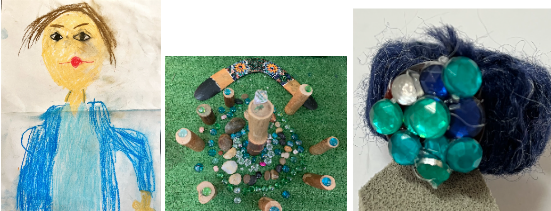

Through Discovery, our children have continued to develop their dispositions as effective discoverers. Our children in the Two Hub have been focussing on developing rigour in their projects. The Hub has been experimenting with a simple process to track and monitor their progress. The children have been introduced to the conferencing process, whereby they collaborate with an educator to reflect on their thinking and learning as their project unfolds.


Some of the questions we ask the children in the Space are:
(i) What are you curious about?
(ii) Why do you want to learn more about this?
(iii) How will you stretch your thinking?
(iv) How will you launch/share your learning with others?
(v) What will you do if you enter the “Pit” (encounter a challenge)?
Sacrament of Confirmation
We are proud to present this year’s Confirmation candidates:
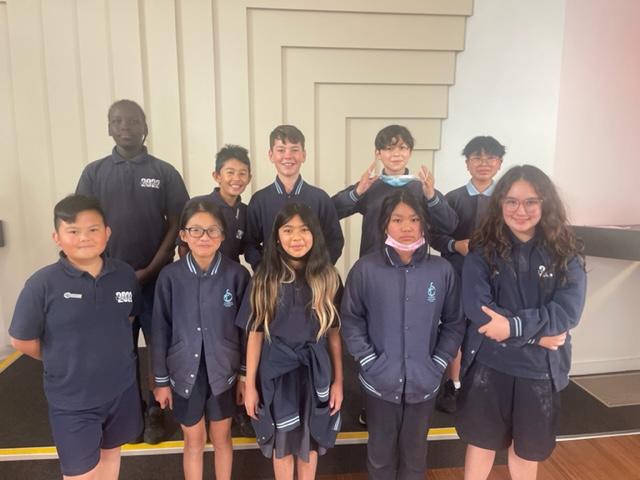

Top (left to right): William, Evan, Noah, Jimmy, Joshua
Bottom (left to right) Hien, Erin, Isabella, Jasmine, Emma
We invite you to keep our candidates in your thoughts and prayers as they prepare for the sacrament.
This term, our year 5/6s have been exploring the Holy Trinity: the Father, the Son and the Holy Spirit. To prepare our candidates, the 5/6s have engaged in dialogue around the Pentecost and the inaugural receiving of the gifts of the Holy Spirit, how this has influenced tradition and ritual over time, and where these gifts are visible within our local and global community.
Prayer gatherings for term 2:
Here are the dates for this term’s remaining prayer gatherings. All families are welcome to come along and participate:
Mitch Hayes
(Faith/REL Leader)
mitch.hayes@sjfootscray.catholic.edu.au
Introducing Confirmation Candidates
The Parish would like to introduce and congratulate our Confirmation Candidates during our regular Mass on:
Sunday 5th of June, 2022
10.00 AM*
Our Lady’s Church
So as a community we can pray and welcome you as you receive the Gifts of the Holy Spirit that will stay with you for the rest of your life. Congratulations!
*If candidates have a regular Mass that they attend please let us know and we can introduce them at their regular Mass times (these would be the Saturday night vigil Masses at Our Lady or Christ the King or the Sunday evening Masses at Our Lady’s or Christ the King).
We look forward to seeing you and your family that weekend.
Parish Consultation sessions
Parish Vision:
We are a community of faith and love,growing, living and proclaiming the Wayof the Gospel by forming new disciples.
As part of the implementation of our Vision, our Parish wishes to hear from Parishioners and our wider Parish community about your dreams for our Parish. Everyone is asked to consider what would it look and feel like if our Parish was one that was Vibrant, with Vitality and Viable?
There are two sessions available:
· Day time: Saturday 18th June 9.30am – Our Lady’s Pavilion - Maidstone
· Evening: Thursday 23rd June 7.00pm – Our Lady’s Small Hall - Maidstone
Please contact the office to indicate which session you would like to attend: maidstone@cam.org.au
Fr Gerald